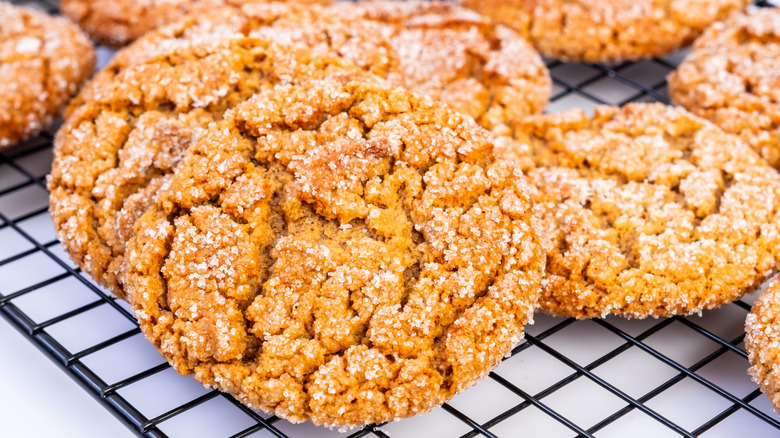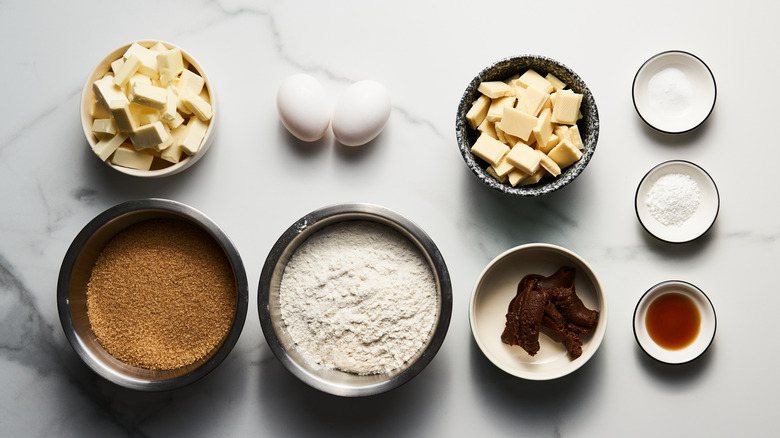Why You Should Be Careful When Pairing Miso With Vanilla In Your Baking
Miso is a terrific add-in to pastries because it provides a pleasingly salty and savory hit that keeps you coming back for more. However, if you're using it in your favorite sugar cookies or vanilla pound cake, you may want to consider just how much you're incorporating. We spoke to Trung Vu, chef-instructor of pastry and baking arts at the Institute of Culinary Education's New York City campus, to see how we should approach miso when it comes to baking.
"Adding miso to vanilla-based baking recipes can enhance and elevate pastries, adding complex dimensions and flavors that are sweet, salty, nutty, and umami," Vu told The Takeout, though he did add in a word of caution. "It is possible that miso can overpower delicate flavors like vanilla, as it can be quite assertive. However, used in the right balance, the two ingredients can complement each other well," he shared.
Vu also advised that not all miso is necessarily appropriate for baking with vanilla. To make miso paste, grains like rice or barley are inoculated with a mold called koji and are then added to cooked soybeans. Exactly how the soybeans are cooked and the length of time they are left to ferment determines the flavor of the finished miso. As Vu explained, "White miso is fermented for a shorter time and with a higher proportion of koji, resulting in a sweeter and milder flavor, making it more suitable for use in pastry and desserts. The intensity of yellow and red misos makes them ideal for use in soups, stews, savory sauces, and marinades."
How to incorporate miso into desserts
Trung Vu clearly shares the opinion that miso makes food better – miso caramel and miso butterscotch are two of his favorite combinations to play with. But you don't always have to stick to caramel notes. Vu said, "Miso also works well with vanilla, chocolate, peanut butter, and fruits like apples, bananas, and pears. If you like salty and sweet combinations, miso adds that salty and savory dimension to desserts."
When it comes to the execution while pairing it with vanilla, you'll want to make sure the miso is evenly incorporated into the batter. Vu suggested adding the miso during the creaming process, when you beat butter and sugar together to create an emulsion. "If incorporating it into a very wet recipe, like cake batter, whisk or blend the miso paste into a small amount of the liquids to thin it out before gradually adding the rest of the liquids," he advised. Depending on what you're making, either of these two techniques prevents a clump of miso paste from being left behind.
"I would also consider reducing or eliminating any salt the recipe calls for, as miso paste can be quite salty," Vu said, the same consideration you should make when using soy sauce in baking or adding MSG to desserts. Really, it's all about balance. Since miso has such a strong presence, you'll want to make sure it doesn't cover up the other notes in your baked goods. But once you get the hang of it, you'll probably want to add miso to everything. The best part is, it probably fits, too — as long as you don't overdo it.

